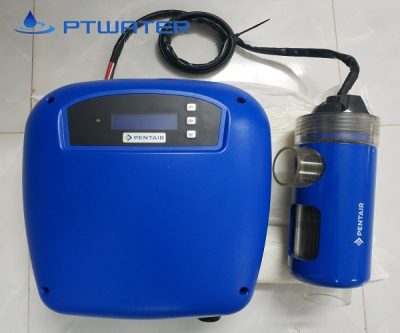



Wastewater treatment is now a critical issue because water resources are increasingly polluted, mainly due to domestic and untreated industrial wastewater flowing directly into the environment. Waste water contains many different pollutants, so it must be treated by appropriate methods.

– Methods of wastewater treatment by physics.
– Treatment method by chemical and physical chemistry.
– Biological wastewater treatment method.
Among the above methods, micro-wastewater treatment system is a fairly common method to treat wastewater containing organic content . The treatment of wastewater by microbiological methods is mainly based on the living activities of the saprophytic bacteria found in the wastewater. These microorganisms use organic matter in wastewater and some minerals as a source of nutrients for their living activities and at the same time these organic substances will be broken down into simple inorganic compounds. The purpose of this process is to remove BOD and COD, …

Forms of microbiological treatment:
A process using aerobic microorganisms to decompose the appropriate organic matter in wastewater in the condition of continuous oxygen supply.
The decomposition of organic matter by aerobic VSV can be described by the following reaction: (CHO) n NS + O 2 → CO 2 + H 2 O + NH 4+ + H 2 S + VSV + ∆H cells
Wastewater treatment processes by aerobic biological methods can occur in natural or artificial conditions. Depending on the different types of VSV, the artificial aerobic biological process is divided into:

Aerobic biological treatment with suspended microorganisms
Aerobic biological treatment with sticky microorganisms
L à measures decomposition of organic matter in anaerobic conditions. In the absence of oxygen, organic matter can be decomposed by microorganisms and the end product is CH4, CO2. The conversion of organic matter by anaerobic bacteria takes place mainly on the principle of fermentation through the following steps:
Step 1: hydrolyze complex organic substances and fats into simpler organic substances such as monosaccharides, amino acids or other salts. This is the source of nutrition and energy for bacteria to function.
Step 2: Groups of anaerobic bacteria carry out the acid fermentation process, converting simple organic substances into common organic acids such as acetic acid, glycerol, acetate, etc.
Step 3: Groups of anaerobic bacteria force alkaline fermentation (mainly methane fermenters such as methanossarcian and methonaothrix) to convert acetic acid and hydrogen into CH4 and CO2.

– Gas-deficient biodegradation, also called fermentation, is often used to treat nitrogen in wastewater with nitrification and denitrification processes. The principle of treatment of anoxic gas of nitrogen and phosphorus compounds is described as follows:
– Nitrate reaction process is described by the equation:
NH3 -> NO3 -> NO2 -> NO -> N2O -> N2 (gas)
– The phosphorite reaction process is described by the equation:
PO4-3 Microogarnism (PO4-3) salt => slugde
Water stirring pump: In order to create stability for anoxic environment, so that the lack of microorganisms can grow and develop well.
Microbiological sludge return system
The support system provides nutrition and substrate for anoxic microorganisms.

Is a continuous biological treatment process, combining 3 microflora systems: anaerobic, anoxic, aerobic to treat waste water . Under the effect of decomposing pollutants of microorganisms, wastewater will be treated before being discharged into the environment. The combination of all three processes will minimize the disadvantages of each process, and the advantages of this process will complement the other process, helping to treat wastewater thoroughly. , minimizing the cost of wastewater treatment for businesses.